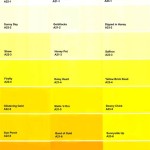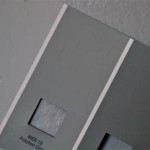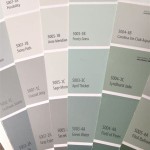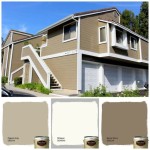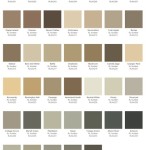What Color to Paint Wood Fence: A Comprehensive Guide
Selecting the appropriate color to paint a wood fence is a decision that extends beyond mere aesthetics. The color choice influences the overall appearance of a property, impacts the fence's longevity, and can even affect the perceived size of a yard. A well-considered color palette enhances curb appeal, complements existing landscaping, and provides a visually pleasing boundary. In contrast, a poorly chosen color can detract from the property's value and require frequent maintenance. Therefore, a systematic approach is necessary to determine the optimal color for a wooden fence.
Several factors warrant careful consideration when deciding on a fence color. These include the architectural style of the house, the surrounding environment, the desired level of maintenance, and personal preferences. Furthermore, understanding the impact of different colors on mood and perception is essential for creating the desired atmosphere within a property.
Understanding the Impact of Color Psychology
Color psychology explores how different colors influence human emotions and behaviors. Applied to fence painting, this understanding can significantly impact the overall feel of a property. Using color psychology effectively requires an awareness of common color associations.
White, for instance, is often associated with purity, cleanliness, and openness. A white fence can create a bright and airy ambiance, visually expanding a space. However, white fences require diligent maintenance to prevent the build-up of dirt and mildew, which can detract from their pristine appearance. White can complement many architectural styles, particularly those with a classic or traditional design. In contrast, a bright white may appear too stark against a very natural or wooded backdrop, but will be a welcome contrast in urban settings.
Black, on the other hand, evokes feelings of elegance, sophistication, and strength. A black fence can add a touch of drama and create a strong visual boundary. Black fences effectively highlight the greenery of surrounding landscaping, making them a popular choice for contemporary homes. However, black absorbs heat, potentially causing the wood to expand and contract more than lighter colors, which could lead to premature wear and tear. This is particularly true in climates with extreme temperature fluctuations. Consider the climate of the location of the fence before considering a darker color like black.
Neutral colors, such as beige, tan, or gray, offer a versatile and understated option. These colors blend seamlessly with the surrounding environment, providing a natural and calming aesthetic. They are less likely to show dirt and require less frequent maintenance than brighter colors. Neutral tones can complement a wide range of architectural styles and are well-suited for properties that prioritize a cohesive and harmonious look.
Beyond these primary options, a spectrum of other colors can be considered, each carrying its unique associations. Blue and green evoke feelings of tranquility and nature, while red and orange create a sense of energy and excitement. However, using bolder colors for a fence requires careful consideration of the surrounding environment and architectural style to avoid creating a jarring or overwhelming effect. Ensure that the chosen color complements the existing color scheme of the property and its surroundings.
Considering the Architectural Style and Surroundings
The architectural style of the house and the characteristics of the surrounding environment significantly influence the optimal fence color. A cohesive design scheme ensures that the fence complements the overall aesthetics of the property, creating a harmonious and visually appealing landscape. Taking cues from the architectural style and surrounding environment allows for the creation of a seamless transition between the built and natural worlds.
For example, a Victorian-style home with intricate architectural details often benefits from a white or off-white fence, which accentuates the house's elegance and grandeur. The clean lines and classic appeal of a white fence create a timeless look that complements the ornate details of the Victorian era. Additionally, a white fence can visually enhance the size of the property, creating a sense of openness and sophistication. Light pastel colors can also complement Victorian architecture, but such a style may be too personalized for some homeowners.
In contrast, a modern or contemporary home with clean lines and minimalist design might look best with a darker-colored fence, such as gray or black. These colors create a bold statement and complement the sleek aesthetics of modern architecture. A dark fence can also provide a strong visual contrast against the greenery of the surrounding landscape, creating a striking focal point. Natural wood tones, when treated and sealed, also work well with modern designs, emphasizing the inherent beauty of the material.
For homes located in natural or rural settings, earth tones such as brown, beige, or green can create a seamless transition between the property and its surroundings. These colors blend harmoniously with the natural landscape, creating a sense of tranquility and integration. A fence painted in earth tones can also help to camouflage the boundary line, allowing the property to blend more naturally with the surrounding environment. Using a color that is similar to the natural elements of the landscape also provides a sense of visual unity and cohesion.
Furthermore, the color of the house itself should be considered when choosing a fence color. The fence should complement the house's color scheme, either by matching the trim color or by selecting a contrasting color that enhances the overall look. Avoiding clashes between the fence and house colors is crucial for creating a visually appealing and harmonious design.
Durability, Maintenance, and Color Fading
Beyond aesthetics, the practical considerations of durability, maintenance, and color fading play a significant role in determining the best paint color for a wood fence. The selected paint color should not only enhance the appearance of the property but also withstand the elements and minimize the need for frequent upkeep. The longevity of the paint and its ability to retain its color over time are crucial factors to consider.
Lighter colors, such as white and beige, tend to reflect sunlight, reducing the amount of heat absorbed by the fence. This can help to prevent the wood from warping, cracking, or fading over time. Lighter colors also tend to show dirt and mildew less readily than darker colors, requiring less frequent cleaning. However, lighter colors may require more coats of paint to achieve full coverage and may be more susceptible to staining from tannins in the wood.
Darker colors, such as black and dark gray, absorb more heat, which can cause the wood to expand and contract more dramatically. This repeated expansion and contraction can lead to premature wear and tear, as well as increased susceptibility to cracking and warping. Darker colors also tend to fade more quickly than lighter colors, requiring more frequent repainting to maintain their vibrancy. However, darker colors can effectively hide dirt and mildew, reducing the need for frequent cleaning.
The type of paint used also significantly affects the durability and maintenance requirements of the fence. High-quality exterior paints specifically formulated for wood provide superior protection against the elements, including moisture, UV radiation, and temperature fluctuations. These paints typically contain additives that resist mildew growth and prevent color fading. Investing in high-quality paint can significantly extend the lifespan of the fence and reduce the need for frequent repainting.
Furthermore, the proper preparation of the wood is crucial for ensuring optimal paint adhesion and longevity. Before painting, the fence should be thoroughly cleaned to remove any dirt, mildew, or loose paint. Any damaged or rotten wood should be replaced. The wood should then be sanded to create a smooth surface for the paint to adhere to. Priming the wood before painting can also improve adhesion and provide an extra layer of protection against the elements. A well-prepared surface ensures that the paint adheres properly and lasts longer, minimizing the need for frequent touch-ups or repainting.
Finally, consider local climate conditions when selecting a paint color. In areas with high humidity, paints with mildew-resistant properties are essential. In areas with intense sunlight, paints with UV-resistant pigments are recommended to prevent fading. Choosing a paint that is specifically designed for the local climate can enhance the lifespan of the fence and reduce the need for frequent maintenance.
In conclusion, the best paint color for a wood fence is a decision that involves careful consideration of several factors. By understanding the impact of color psychology, considering the architectural style and surroundings, and evaluating the practical considerations of durability, maintenance, and color fading, it is possible to select a color that enhances the appearance of the property, complements the environment, and provides long-lasting protection for the fence.

Fence Paint Colours

5 Fence Paint Colors To Refresh Your Exterior Curb Appeal Wow 1 Day Painting

4 Tips For Choosing The Right Fence Color Secure And Rail

14 Best Backyard Fence Color Ideas For Stain Or Paint

5 Fence Paint Colors To Refresh Your Exterior Curb Appeal Wow 1 Day Painting

Do S And Don Ts For Choosing The Right Fence Colour Maria Killam

Wood Fence Painting And Staining Instructions Tips

Fence Paint 10 Best Color Ideas The Family Handyman

Paint Colours For Fence Jims Fencing

Behr 1 Gal N520 2 Silver Bullet Solid Color House And Fence Exterior Wood Stain 01101 The Home Depot
Related Posts

